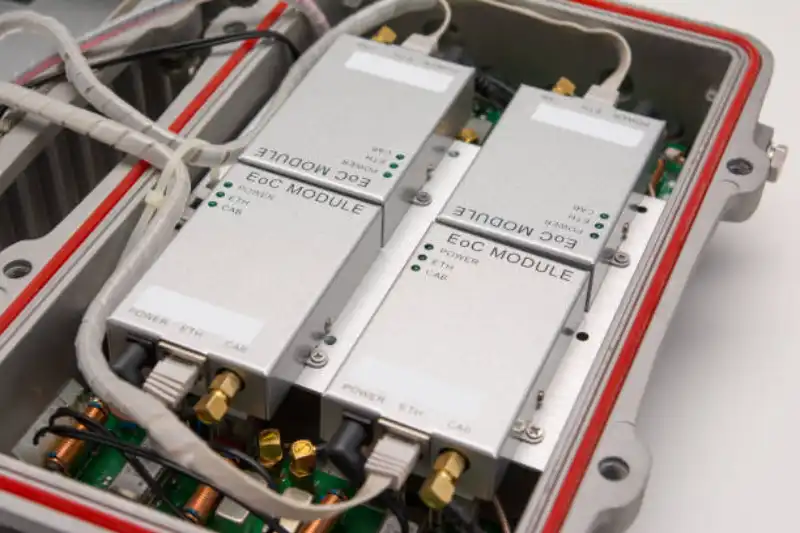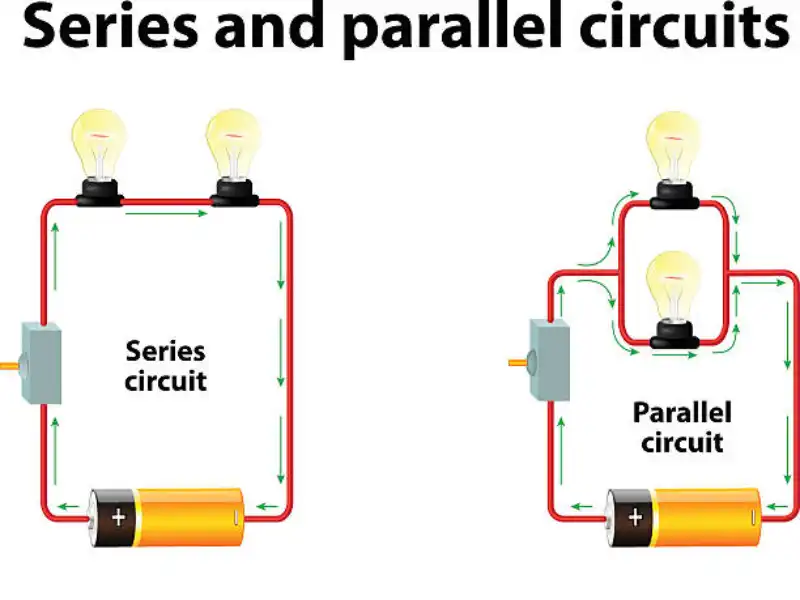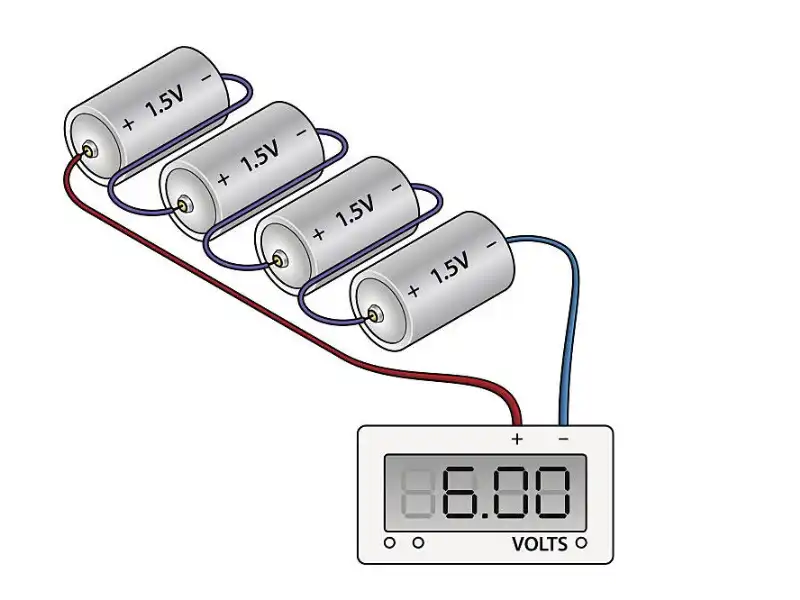When it comes to configuring batteries, two fundamental approaches are typically considered: series and parallel connections. In a series configuration, battery voltage sums up while the amp-hour capacity remains consistent throughout. This setup is seen when a higher voltage is required, such as for electric vehicles or solar charge controller systems. The process involves connecting the positive terminal of the first battery to the negative terminal of the subsequent one. Consequently, a series connection increases the voltage output.
In contrast, a parallel connection aims at maintaining a constant voltage while the total capacity (or amp-hour capacity) is the sum of individual batteries. This setup proves beneficial when you want a larger battery bank with a prolonged duration. This is accomplished by connecting the positive terminal to a positive terminal, and the negative terminal to the corresponding negative terminal, keeping the battery voltage steady across the board.

The Technical Process Behind Wiring Batteries in Series
Wiring batteries in series involves connecting the positive terminal of the first battery to the negative terminal of the subsequent one, thereby increasing the total voltage of the battery system. Such a configuration is useful when a higher voltage is required. For instance, if you are wiring two 12-volt batteries in series, the total voltage output becomes 24 volts.
However, it’s crucial to remember that even though the voltage output increases, the amp-hour capacity remains the same as a single battery. Hence, the number of batteries and their configuration has a significant effect on the total voltage and capacity rating of a battery pack.
Advantages and Disadvantages of Wiring Batteries in Series
Wiring batteries in series allows for an increased voltage without needing a converter. This setup might be necessary where higher voltage systems are at play, such as certain appliances or electrical systems. Furthermore, a series configuration tends to be relatively simple and straightforward, which can facilitate the assembly process.
Despite its benefits, series wiring does have its drawbacks. For example, mismatched or unbalanced batteries can lead to issues such as lower voltage output, premature battery failure, and decreased battery performance. It’s essential to ensure all batteries in the series have the same capacity and are in a similar state of health to prevent these potential problems.
The Key Steps to Wire Batteries in Parallel
In parallel battery configuration, you are, in essence, creating one larger battery from many smaller ones. This setup ensures that a consistent voltage is maintained, while the total capacity is combined. Suppose you’re setting up two 12-volt batteries with a 20-amp-hour capacity each. In a parallel connection, the total setup would maintain the 12-volt voltage level while boasting an increased amp-hour capacity of 40 amp-hours.
The process of creating a parallel connection starts with connecting the positive terminal of the first battery to the positive terminal of the second (or remaining batteries) and likewise for the negative terminals. The resulting parallel configuration could theoretically support a higher number of appliances for more extended runtime.

The Pros and Cons of Wiring Batteries in Parallel
The main advantage of a parallel battery configuration is the increased total capacity, which allows for a longer duration of use. This setup is ideal when you want to power up more appliances or require a longer runtime for your devices.
On the downside, wiring batteries in parallel can lead to unequal sharing of load amongst the batteries due to differences in internal resistance. This can result in some batteries discharging quicker than others, leading to capacity imbalance. Also, a fault in a single battery can affect the entire system’s performance in a parallel setup.
Effect of Series and Parallel on Voltage and Capacitance
Series and parallel connection methods can have drastically different outcomes for your setup’s voltage output and amp-hour capacity. A table could easily highlight these differences:
| Configuration | Voltage | Capacity |
| Series | Increases | Remains same |
| Parallel | Remains same | Increases |
A series configuration raises the overall voltage while maintaining the same capacity. On the other hand, parallel wiring retains the voltage of a single battery but amasses the total capacity of all the batteries. Both configurations come with a unique set of advantages and potential disadvantages, which we will further delve into in the coming sections.
How Battery Type Influences Series and Parallel Connections
Battery type plays a significant role in determining the most suitable configuration, whether series or parallel. The common types such as lead acid batteries and lithium batteries react differently to these setups. Lead acid batteries, for instance, can handle series configuration quite well, provided that all the batteries are of the same type, age, and capacity. However, they may face issues in a parallel setup due to their high internal resistance.
On the other hand, lithium batteries manage parallel configurations effectively but are somewhat more complex in a series setup due to the necessity of a Battery Management System (BMS) to prevent overcharge and over-discharge. Lithium batteries need careful management to ensure longevity, which might complicate the wiring process.
Safety Concerns when Wiring Batteries in Series or Parallel
Safety should always be a priority when setting up batteries in any configuration. Incorrect or loose wiring can lead to short circuits, overheating, or even fire hazards. Also, different battery types have different voltage and capacity ratings, and mismatching these could lead to overcharging or rapid discharging, both of which could harm the batteries’ lifespan and safety.
In a series connection, mismatched batteries can lead to reverse charging of the weaker battery, potentially causing it to leak or even explode. On the other hand, in a parallel connection, a fault in a single battery could affect the entire system’s performance and safety.

Maximizing the Benefits With Series-Parallel Battery Connection
For situations requiring a higher voltage and capacity, a series-parallel configuration is often adopted. This configuration involves creating sets of batteries wired in series and then connecting these sets in parallel. This series-parallel connection provides the benefits of both worlds: increased amp-hour capacity from the parallel configuration and higher voltage from the series connection.
This configuration does, however, come with its complexities. Each set of series batteries must have the same capacity and voltage for the parallel connection to work effectively. Ensuring this balance across both series and parallel connections can be a challenging process, but it offers a versatile solution for power-demanding applications.
Charging Considerations for Series and Parallel Battery Configurations
When it comes to charging, series and parallel configurations need to be handled differently. In a series connection, a charger with a voltage equal to the total voltage of the series is required. For instance, for a series of two 12-volt batteries, a 24-volt charger would be necessary. In contrast, in a parallel configuration, a charger with a voltage equal to a single battery in the system is needed, but the charger needs to be capable of delivering the cumulative amp-hour capacity of the entire battery bank.
In both cases, battery matching is crucial. Unequal charging can lead to some batteries being overcharged while others may not get fully charged, impacting the battery system’s overall efficiency and lifespan.
Battery Lifespan in Series vs Parallel Wiring
In both series and parallel connections, the lifespan of your battery system depends heavily on the condition of the individual batteries and their compatibility with each other. In a series connection, the system is as strong as the weakest battery. A weaker battery in the series could bring the performance of the entire system down, thus affecting the lifespan.
In contrast, in a parallel connection, while a single weak battery might not impact the system’s voltage, it could pull down the total capacity, thereby affecting the runtime and eventually, the lifespan of the setup.
The choice between series and parallel should also take into account the type of batteries being used. For instance, lithium batteries generally have a longer lifespan than lead acid batteries, especially in a well-managed parallel configuration.
The Impact of Wiring Batteries in Series vs Parallel on Energy Efficiency
Energy efficiency is a key factor when deciding on the configuration of your batteries. In a series configuration, the efficiency could be affected by the state of individual batteries. If one battery has a higher internal resistance than others, it could lead to increased energy loss in the form of heat, thus lowering the system’s efficiency.
On the other hand, in a parallel configuration, if one battery has a lower capacity, it might get charged and discharged faster than others, leading to frequent cycling and potential efficiency loss. It is essential to understand these factors when deciding on the most energy-efficient setup for your specific requirements.

How to choose between wiring batteries in series and parallel for specific needs?
The choice between wiring batteries in series and parallel depends on your specific needs. If you need a higher voltage, a series configuration may be more suitable. On the other hand, if your goal is to have a greater total capacity for prolonged use, a parallel configuration might be the way to go.
For example, in RVs or electric vehicles where both high voltage and high capacity are required, a series-parallel configuration might be ideal. You can use the table below to better understand which configuration suits your needs:
| Your Need | Recommended Configuration |
| Higher voltage | Series |
| Higher capacity (longer usage time) | Parallel |
| Combination of high voltage & capacity | Series-Parallel |
Conclusion
Understanding the implications of wiring batteries in series vs parallel (Learn: Wiring Batteries in Parallel Danger – What You Need to Know for Safety) is crucial for creating an effective and efficient battery system. Whether your need is to increase voltage, prolong usage time, or a combination of both, knowing the principles behind each configuration, their advantages, disadvantages, and safety considerations can help you make an informed decision for your specific requirements. Always remember that safety comes first, and consulting a professional in unclear or complex situations is advised.
If you need to purchase batteries, Polinovel will be a great option for you. Over Polinovel is a Lithium-ion battery manufacturer with fifteen years of experience, offering a range of lithium batteries and customized solutions for lead-acid replacement.

